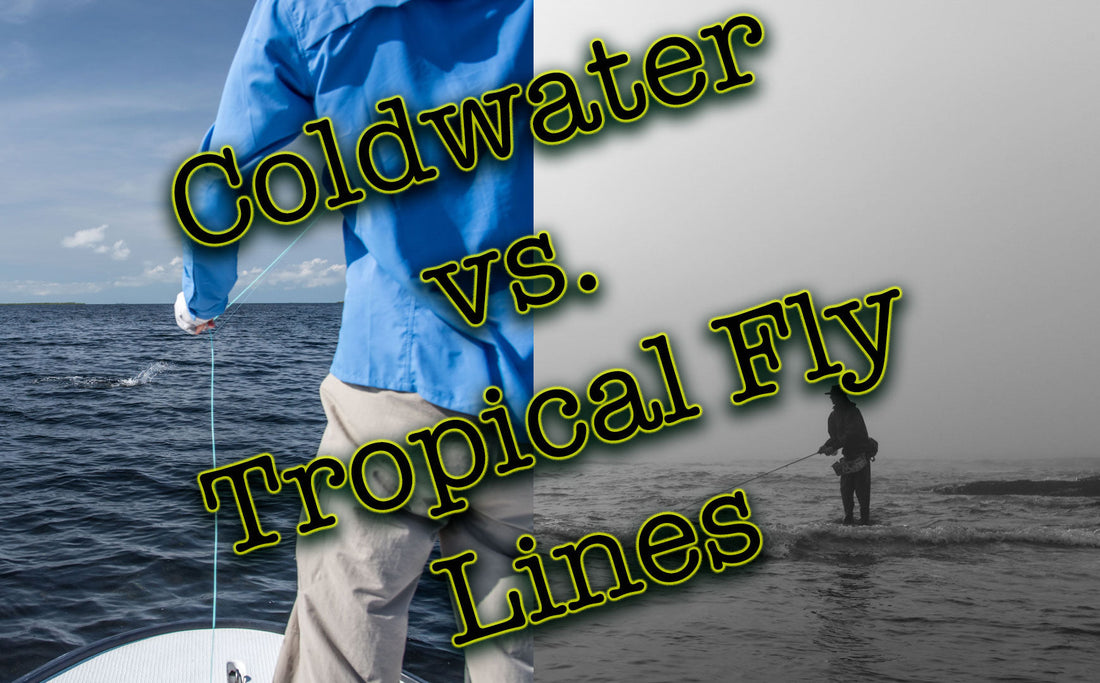
What's the Difference Between a "Coldwater" and "Tropical" Fly Line?
Share
This is one of the most common questions that I am asked regarding fly lines, especially when speaking to customers who are preparing for a fishing trip. These traveling customers usually want to know if they can get away with using their striped bass line while in Belize for bonefish or permit. This is a very legitimate concern and idea, so let's flesh-out the differences in construction (if any) between these two types of lines.
The development of fly lines over the past 20-30 years has been fairly significant. There wasn't much in the way of "tropical" or "coldwater" lines in the 1980's. I have even talked to customers who were fishing for tarpon in Florida 25 years ago who used to stick their lines in their cooler to try and keep them stiff(er) in between casting at cruising silver kings. So, back then, without any specific temperature based fly lines, anglers were certainly seeing a difference when fished in various climates. Now, fly line manufacturers are building fly lines with various materials and implementations of such materials to help construct lines that perform better in more extreme conditions.
Coldwater Fly Lines
- Softer/more supple to help prevent the line from getting too stiff in cold climates. A line that is too stiff will have much more memory and be apt to tangle more easily as they hold their coil much more.
- Traditionally built using braided/multifilament cores which are softer than monofilament cores.
- The coatings on the coldwater lines are supple and differ from those of tropical lines - there are many various materials that different manufacturers will use, but for the most part the core and coating are the factors which are focused on the most. This is also why coldwater lines tend to generally be less durable than tropical - their coatings are softer and will usually nick/peel/degrade quicker.
Tropical Fly Lines
- Stiffer - this helps keep the line from getting too limp in the warmer water, hot boat decks, and tropical sun. Holding its rigidity in hot climates helps to ensure that the line doesn't becomes essentially a 100ft piece of cooked spaghetti. Cooked spaghetti is hard to cast!
- Built, usually, using a monofilament core
From the back of Rio's "Coldwater Series" Outbound Fly Line: "...and are built on a supple, coldwater coating that ensures the line remains tangle free."
From the back of Rio's "Tropical Series" Bonefish fly line: "Medium stiff core and hard coating that will not wilt in warm conditions"
What happens if you bring a coldwater line to the tropics?
If an angler was to bring a coldwater line out on a bonefish flat in Belize, the hot sun/boat deck/and warm water will make this softer line even limper. It also potentially gets stickier. When this happens, a limp line will tangle much easier, get stuck in the guides or to itself, and also will pick up more dirt and grime. All these factors would create a scenario where the line would become increasingly more difficult to cast and make for a frustrating day on the water.
This scenario happened to me about a year ago while fishing in the hot northern Argentina jungle. I brought a few different rods/lines/setups with me and one setup in particular had a fly line which did not behave well in the hot weather. It became sticky and limp. The line tangled on every cast and was quickly taken off the reel and packed away at the end of the day.
What happens if you bring a tropical line in coldwater?
With it already being fairly stiff, a tropical line will become even stiffer when introduced to cold climates. Mega-coiling and tangles usually ensue. Think of it like trying to cast a slinky...(if you even remember what those are). The increasingly stiff line will hold tons of memory and be very hard to straighten out.
How different are the coatings between coldwater and tropical fly lines?

Fly line manufacturers like Rio, Airflo, and Scientific Anglers all have their own proprietary way of creating their preferred coatings. Some use PVC like Rio, while others like Airflo use polyurethane. They all have to be tweaked in various ways to get the desired stiffness. The main way a manufacturer determines the proper hardness for a coating is through a durometer. A durometer uses an indentor to determine the hardness of a specific material. In the case of a fly line, a durometer is used to form a "shore test" (which measures the resistance of a certain material to a given pressure). These measurements are scaled from 0-100. 100 being very stiff. Coldwater lines read somewhere around 60-70 where tropical lines usually are at about 90.
I hope that helps! Send me an email - support@allpointsflyfishing.com - if you have any questions!
Written by: Josh Thelin
Cover photos by: Paul Smith + Andy York



3 comments
This information was exactly what I needed. Super clear and helpful. Thank you!
Thank you Jon!
Nice and helpful article Josh!